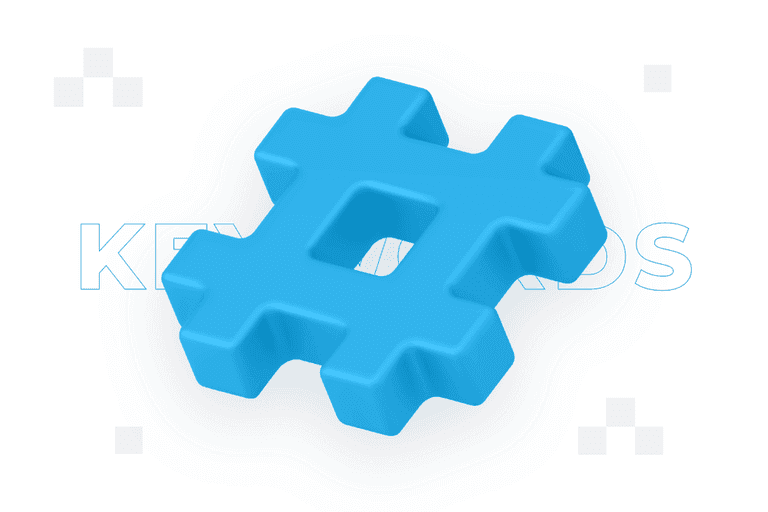
MVP (Minimum Viable Product) – what is it?

A Minimum Viable Product (MVP) is a basic version of a new product that enables rapid validation of business ideas with minimal resources. By collecting initial feedback from users, the MVP is the first step towards continuous product improvement on the way to a full launch.
From this article you will learn:
- What is a Minimum Viable Product?
- What are the relationships between the MVP and the product life cycle?
- Where and when is the Minimum Viable Product used?
- What are the alternatives to the MVP?
- How do you create a Minimum Viable Product?
- What can be gained from an MVP?
- What are some examples of companies that have relied on Minimum Viable Product?
Minimum Viable Product – definition
A Minimum Viable Product (MVP, in Polish translates as ‘product of minimum sufficient value’ or ‘sufficiently useful product’) is a version of a new product that allows the team to gather the maximum amount of customer information with as little effort as possible. An MVP is a basic version of a product with enough features to launch the product and attract early adopters and gather the necessary information about how the product is received by the market.
The MVP concept originated from the Lean Startup methodology, which was popularised by Eric Ries. He started to develop the idea in 2008 and the concept of MVP has gained popularity as a central element of the methodology. Lean Startup is based on the iterative creation and testing of a product and ongoing adaptation in response to customer feedback. MVP, on the other hand, can be seen as a tool to quickly test business assumptions with minimal cost and resources.
A Minimum Viable Product (MVP) is a basic version of a product that collects the maximum amount of customer preference data with the least amount of resources.
Definition of Minimum Viable Product
Before the advent of Lean Startup, the product development process was often long and expensive, leading to significant risk. The introduction of the MVP concept and iterative approach has significantly changed the way companies and startups approach new product development.
Minimum Viable Product and the product lifecycle
Minimum Viable Product is deeply connected to the early stages of the product life cycle – with MVP, teams can test business assumptions and get valuable feedback from users at an early stage. This can lead to a better understanding of the market and customer needs, which can translate into better design decisions in later phases of the product lifecycle.
In the growth phase, the information gained from the MVP can help optimise product features and marketing strategy, which in turn can help increase customer loyalty. As the product matures, experiences from the MVP can continue to provide valuable lessons that can help identify new opportunities for development or improvement. Even as a product nears the end of its life cycle, knowledge gained in the early stages can be useful for developing new products or adapting existing products to changing market conditions.
Application of the Minimum Viable Product
The application of the Minimum Viable Product (MVP) plays a key role in various business areas, particularly in the context of the lean startup method. This is because it makes it possible to quickly assess the relevance of business ideas and to check whether there is a real demand for the proposed product or service.
With an MVP, companies can minimise the risks associated with bringing a new product to market by obtaining early feedback from users and adapting the product according to the feedback received. An MVP can also serve as a tool to attract investors by showing them a working product and initial market acceptance data.
With an MVP, it is possible to understand the market in which the company wants to operate, including customer preferences, competitors and other key market factors. It also helps set the direction for further product development by identifying key features that should be improved or added in future versions of the product.
By focusing on the core features of the product, the MVP helps save resources that could be invested in developing features that are not relevant to users. This helps to build an early user base and gain traffic. In addition to this, it is worth noting that an MVP promotes a culture of learning and adaptation by continuously gathering feedback from users and iteratively improving the product.
Alternatives to MVP
Alternatives to the Minimum Viable Product (MVP) approach also focus on validating business assumptions and understanding the market, but may differ in approach or scope. Here are some alternatives to the MVP:
- Minimum Lovable Product (MLP) focuses on creating a product that not only meets users’ basic needs, but also evokes emotions, such as delight or satisfaction. The aim is to create a stronger connection with users by offering a product that is attractive and enjoyable to use.
- A Minimum Marketable Product (MMP) is a version of a product with a minimum set of features that are sufficient to attract customers and start generating revenue. It differs from an MVP in that it focuses more on the market readiness of the product rather than a simple verification of assumptions.
- Minimum Awesome Product (MAP) is an extension of the MVP concept. MAP retains the functions of hypothesis testing, but adds an additional incentive for customers to respond enthusiastically.
- Simple, Lovable, Complete (SLC) is an approach in which, instead of focusing on a minimum set of features, the aim is to create a refined product that meets the main needs of the users, which is also attractive and offers a full range of basic functions.
- Prototyping involves the creation of initial versions of a product that can be used to gather feedback from users before developing a full version of the product. Prototypes may be less functional or less refined than MVPs.
- Proof of Concept (PoC) is the implementation of a specific idea or method to confirm that an idea is technically or operationally feasible. Unlike an MVP, a PoC is not usually intended for end users.
- A pilot involves the introduction of a product in a limited market or to a limited group of users to understand how the product will perform in a real-world environment before a full launch.
- Concierge MVP is a model in which a company manually performs functions that will be automated in the future to understand how customers respond to the value offered by the product.
- The Wizard of Oz MVP, like the Concierge MVP, relies on manual execution of functions, but in such a way that users are led to believe that interactions are automated.
Creating a Minimum Viable Product
Creating a Minimum Viable Product (MVP) involves several steps that help teams focus on the product’s most important features and get feedback from users.
The first step in creating a Minimum Viable Product (MVP) is to identify the specific problem the product aims to solve. This lays the foundation for defining the proper scope and features of the MVP and allows teams to focus on the most important aspects of the product. The final scope and functions of the MVP are directly related to this initial understanding of the problem.
Market research is necessary to understand the market, the competition and the needs and preferences of potential users, which in turn influences product design decisions. Once these elements are understood, teams can identify the functions needed to solve the identified problem and focus on implementing them in the MVP.
The development phase involves designing, coding and testing a basic version of the product, with a focus on key features. The product is then rolled out to the market, allowing initial feedback from users to be obtained – this allows an understanding of how the product is received, what works well and what needs improvement. The information gathered provides data that can be used to improve or add new features and fix bugs to better meet user expectations.
Iteration allows the value delivered by the product to be optimised, leading to greater user satisfaction. The process continues until the product reaches a level of readiness for full launch, as assessed by the teams. Once an appropriate level of optimisation is achieved, opportunities to scale the product and develop it further open up. Resources can be diverted to marketing activities, sales activities or further development of product functionality.
Benefits of MVP
Using Minimum Viable Product (MVP) allows companies to quickly validate business ideas with minimal resources. Another benefit is risk minimisation – testing a product early in the market can help avoid costly mistakes later on. Early feedback from users provides insight into how the product is received, as well as which features are most valuable to users. In addition, an MVP can attract investors by showing them a functional product with initial market interest, which can help secure funding for further development.
Examples of companies that have bet on the Minimum Viable Product
Minimum Viable Product is a concept whose effectiveness has been proven by current market giants. Examples of companies that started by implementing a sufficiently useful product and developed it over the years are:
- Dropbox – before fully launching their product, Dropbox created a simple demonstration video showing how their product works, which attracted a lot of interest.
- Airbnb – the founders started with a simple service, allowing people to rent out mattresses in their flats, before developing the platform.
- Zappos – the founder of Zappos started with a simple test, selling shoes online from a local shop, before investing in a full-fledged online shop.
- Spotify – the first version of Spotify was a simple music streaming app that was tested in a small market before expanding to larger markets.
The effectiveness of the MVP concept is evidenced by the fact that after the successes of the companies mentioned above, others such as Google Drive and Tidal started to appear in the niches they had developed.
FAQ
Contact form
Develop your brand
Rate content:
You may be interested in:




